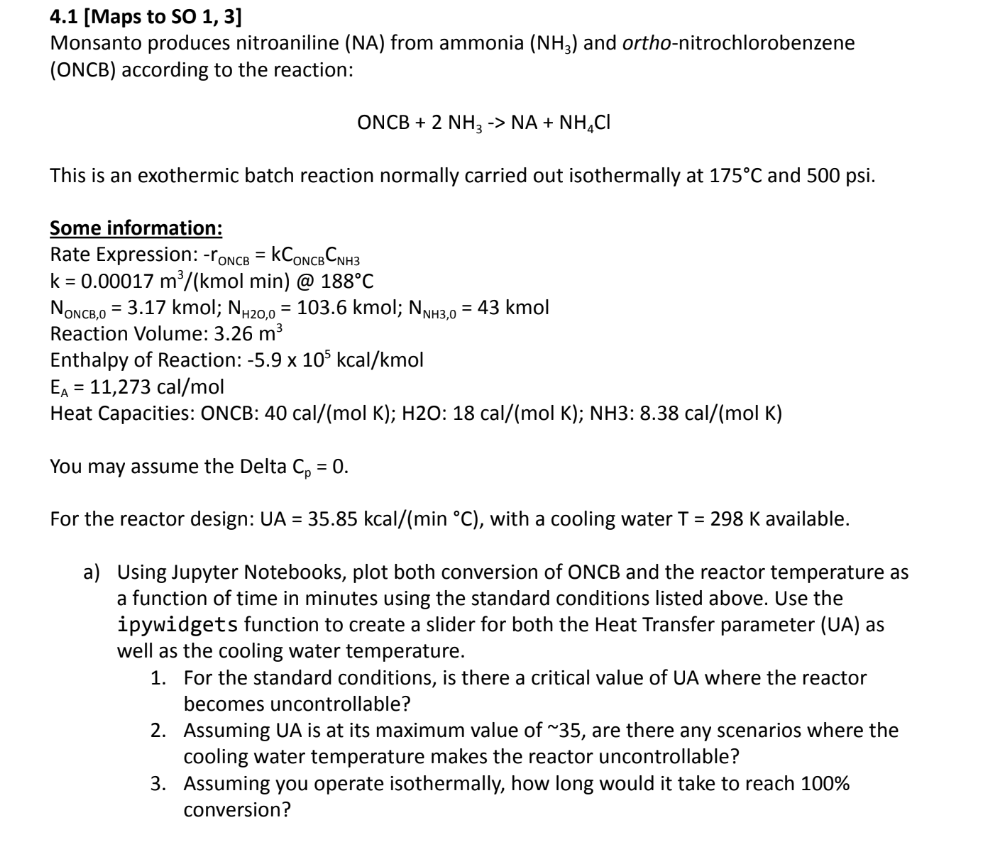Answered step by step
Verified Expert Solution
Question
1 Approved Answer
4.1 [Maps to SO 1, 3] Monsanto produces nitroaniline (NA) from ammonia (NH;) and ortho-nitrochlorobenzene (ONCB) according to the reaction: ONCB + 2 NH3 ->

4.1 [Maps to SO 1, 3] Monsanto produces nitroaniline (NA) from ammonia (NH3) and ortho-nitrochlorobenzene (ONCB) according to the reaction: ONCB + 2 NH3 -> NA + NHCI This is an exothermic batch reaction normally carried out isothermally at 175C and 500 psi. Some information: Rate Expression: -KONCB = KCONCBCNH3 k = 0.00017 m/(kmol min) @ 188C NONCB,0 = 3.17 kmol; NH20,0 = 103.6 kmol; NNH3,0 = 43 kmol Reaction Volume: 3.26 m Enthalpy of Reaction: -5.9 x 105 kcal/kmol EA = 11,273 cal/mol Heat Capacities: ONCB: 40 cal/(mol K); H2O: 18 cal/(mol K); NH3: 8.38 cal/(mol K) You may assume the Delta Cp = 0. For the reactor design: UA = 35.85 kcal/(min C), with a cooling water T = 298 K available. a) Using Jupyter Notebooks, plot both conversion of ONCB and the reactor temperature as a function of time in minutes using the standard conditions listed above. Use the ipywidgets function to create a slider for both the Heat Transfer parameter (UA) as well as the cooling water temperature. 1. For the standard conditions, is there a critical value of UA where the reactor becomes uncontrollable? 2. Assuming UA is at its maximum value of ~35, are there any scenarios where the cooling water temperature makes the reactor uncontrollable? 3. Assuming you operate isothermally, how long would it take to reach 100% conversion?
Step by Step Solution
There are 3 Steps involved in it
Step: 1

Get Instant Access to Expert-Tailored Solutions
See step-by-step solutions with expert insights and AI powered tools for academic success
Step: 2

Step: 3

Ace Your Homework with AI
Get the answers you need in no time with our AI-driven, step-by-step assistance
Get Started


